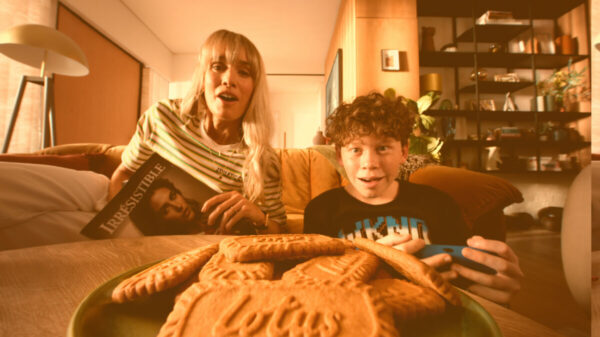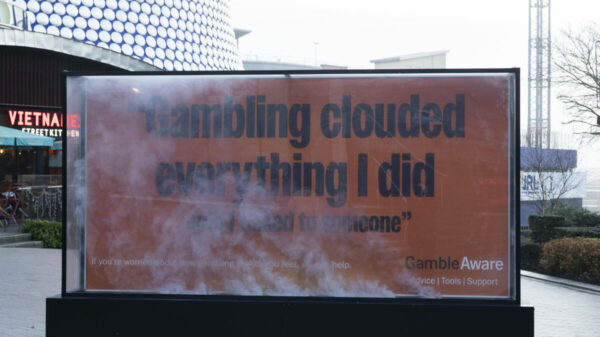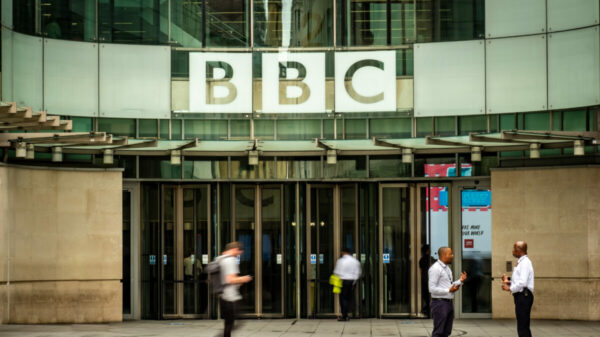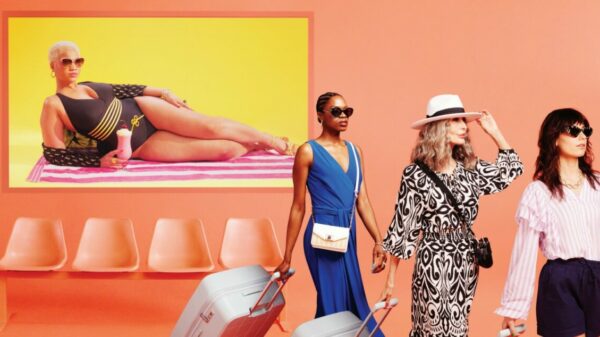CALM’s ‘The Last Photo’ campaign reveals the heart-breaking reality behind suicide
Mental health charity Campaign Against Living Miserably (CALM) has launched its largest ever suicide prevention initiative in a bid to reshape the UK’s understanding of suicide.
Earlier this week, 50 6.5-foot high, unbranded ‘smiling portraits’ were placed in London’s South Bank area, grabbing the attention of passers-by with their depiction of what seemed to be people living ‘happy, care-free lives’.
It has been revealed today on ITV’s This Morning that each smiling image is in fact the last photograph of someone who took their own life soon after.
The OOH campaign aims to highlight the harrowing fact that “suicidal doesn’t always look suicidal” and that there is often a stigma attached to suicide, with people assuming that it looks like “reclusiveness, crying and silence” beforehand.
“Yet in reality, suicidal behaviour takes many forms. Often people can seem happy just moments before taking their own lives,” CALM said.
“Behind every smile is a tragic story of loss and despair that touches family, friends and communities,” CALM CEO Simon Gunning said.
“We like to thank all the families that contributed to the campaign for their strength and courage in stepping forward and sharing these powerful stories.
READ MORE: Cadbury launches new mental health campaign featuring Helen Mirren and Ian Wright
Ogilvy’s Sadiq Khan-backed #HaveAWord campaign secures additional £18m in funding to stop male violence
Ogilvy’s #HaveAWord campaign, created at Sadiq’s Khan’s request to raise awareness around violence against women in the capital, has secured an additional £18 million in funding.
Spearheaded by the agency’s powerful short film, the campaign was rolled out across national TV and print media, eventually garnering a worldwide response after being widely shared across social media with an estimated 3.1 billion earned impressions.
The London-based agency’s campaign was aimed primarily at challenging male violence towards women and calling passive support through inaction. Strikingly, 85% of men who have heard of the campaign have said they would act to stop such behaviour if they saw it happening.
“Tell a man they’re a misogynist and they’ll ignore you or punch you,” said Ogilvy UK creative & strategy officer, Charlie Coney said.
“Give them the tools and confidence to prevent it and they turn into allies. With the Mayor announcing an extra £18m of funding and McDonalds rolling this out in restaurants, it’s been a big week for our HaveAWord campaign.
He added: “And, as of September, it will go into every school in London. We’re stopping misogyny now, and changing long-term behaviour. While being awarded in Cannes is a wonderful accolade, the impact this has made on British culture is even more rewarding.”
READ MORE: Ogilvy appoints its first global head of influence, recognising the rising value of influencers
‘Ginger’ furniture ad sparks controversy for apparent racist term
A furniture design studio poster advertising ‘Ginger’ – a new armchair model – has sparked controversy online and gone viral on Twitter for appearing to include a racist term.
The advertisement, which belongs to product, graphic and interior design company Yonoh, has come under fire by many social media users due to the advert’s unconventional ordering of letters.
Originally intended to read as ‘Ginger’, the text has taken on a whole new meaning online.
The Twitter user who spotted the in-house chair promotion poster wrote: “Soooooo NOBODY in marketing looked at this and thought, let’s not :).”
Soooooo NOBODY in marketing looked at this and thought, let’s not. 🙂 pic.twitter.com/mRsPQnbxHF
— Amérique, fille, nous ne sommes pas ok 🫠 (@dayofthew333k) June 11, 2022
The poster is promoting the brand’s ‘Ginger’ armchair that intends to “blend gentle contours with a comfortable, contemporary design”.
The furniture piece is said to be inspired by the “bulbous stem” of the medicinal ginger plant.
Based in Valencia, Spain, Yonoh prides itself product, graphic and interior design that differs for their “simplicity and functionality”, and exudes “freshness and uniqueness”.
Another user on Twitter attempted to give a reason as to why people may have misinterpretted the featuring text:
“Most people don’t read counterclockwise… I guess? Though the desired effect, reading bottom left to top right, ain’t natural either.”
Soooooo NOBODY in marketing looked at this and thought, let’s not. 🙂 pic.twitter.com/mRsPQnbxHF
— Amérique, fille, nous ne sommes pas ok 🫠 (@dayofthew333k) June 11, 2022









